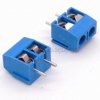Rgardner928
New Member
I'm extremely new to this and I don't know where to go. I just joined your forum, So let me start off by saying that.
I could probably do it myself as I have basic soldering gun and tools. But I don't know how or where to begin. Maybe somebody out there knows what I need and can help me to accomplish what I'm looking for quickly.
I'm looking for someone to make or help me learn to make a circuit board that gets power from a 12v wall wart. Amperage is flexible to whatever is needed. Once said board is powered up it needs to be able to turn on a 12-volt normally closed water solenoid that's controlled by a waterproof motion sensor on a lead that's about 12" long.
And this same circuit board must also have two water level sensors on 6" leads. So that when the water reaches the top sensor it kicks on a small 12-volt water fountain style pump. When the water level gets down low enough to expose the lower sensor the pump shuts back off.
Both have to work independently of each other without interference from the solenoid or the fountain pump or any sensors. Only want one similar barrel style plug to control it all from.
Thanks in advance
I could probably do it myself as I have basic soldering gun and tools. But I don't know how or where to begin. Maybe somebody out there knows what I need and can help me to accomplish what I'm looking for quickly.
I'm looking for someone to make or help me learn to make a circuit board that gets power from a 12v wall wart. Amperage is flexible to whatever is needed. Once said board is powered up it needs to be able to turn on a 12-volt normally closed water solenoid that's controlled by a waterproof motion sensor on a lead that's about 12" long.
And this same circuit board must also have two water level sensors on 6" leads. So that when the water reaches the top sensor it kicks on a small 12-volt water fountain style pump. When the water level gets down low enough to expose the lower sensor the pump shuts back off.
Both have to work independently of each other without interference from the solenoid or the fountain pump or any sensors. Only want one similar barrel style plug to control it all from.
Thanks in advance









